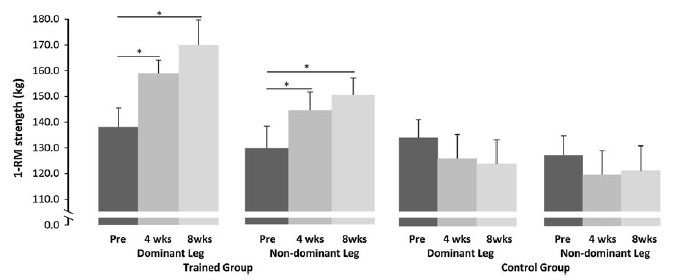THANK YOU FOR VISITING SWEATSCIENCE.COM!
My new Sweat Science columns are being published at www.outsideonline.com/sweatscience. Also check out my new book, THE EXPLORER'S GENE: Why We Seek Big Challenges, New Flavors, and the Blank Spots on the Map, published in March 2025.
- Alex Hutchinson (@sweatscience)
***
Does how you run cause (or prevent) injuries? Everyone has a theory, but no one has much data. Into the breach steps Dan Lieberman, with a new Vibram-funded study of injury rates on Harvard’s cross-country team between 2006 and 2011, just published online at Medicine & Science in Sports & Exercise. He looks at 52 runners — 36 rearfoot strikers and 16 forefoot strikers — all of whom recorded their daily training on an online running log during the study, and whose injuries were precisely recorded by the team’s trainers.
The results?
Approximately 74% of runners experienced a moderate or severe injury each year, but those who habitually rearfoot strike had approximately twice the rate of repetitive stress injuries than individuals who habitually forefoot strike.
Now, this is a very interesting and significant result. It also has limitations, which the authors take great pains to detail in their discussion. Probably the most important: this is a retrospective, non-randomized study. That means, for example, that it doesn’t address what happens if a habitual, lifelong rearfoot striker switches to a forefoot strike, which requires stronger calf and foot muscles.
Another point that the authors make is the presence of considerable individual variation. Here’s some of the data:
 (The caption reads “Repetitive injuries/10,000 miles; moderate and severe.” Not sure why Harvard is apparently using a Commodore 64 hooked up to a dot-matrix printer to generate its graphics!) Anyway, the point is that some people seem to do just fine with their rearfoot strike, while others are frequently injured with their forefoot strike:
(The caption reads “Repetitive injuries/10,000 miles; moderate and severe.” Not sure why Harvard is apparently using a Commodore 64 hooked up to a dot-matrix printer to generate its graphics!) Anyway, the point is that some people seem to do just fine with their rearfoot strike, while others are frequently injured with their forefoot strike:
[M]any runners who [rearfoot strike] in shoes do not get injured or get injured rarely even when they train at high intensity. We predict that these runners have better form than those who do get injured: they probably land with less overstride and more compliant limbs that generate less severe impact loading and generate less extreme joint moments… These predictions are supported by several recent studies, and they emphasize the hypothesis that running style is probably a more important determinant of injury than footwear (with the caveat that footwear probably influences one’s running style).
So there you have it. The study’s not perfect, and it doesn’t settle these debates once and for all. But it takes us closer by offering some straightforward data — and that’s how science should work.

